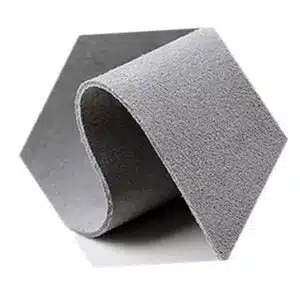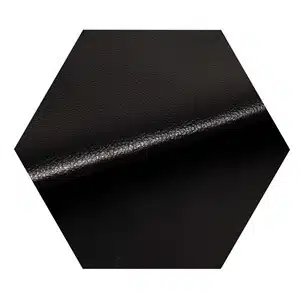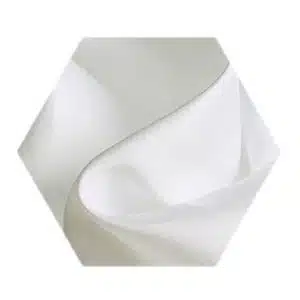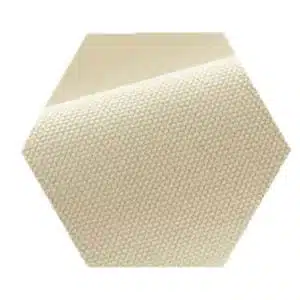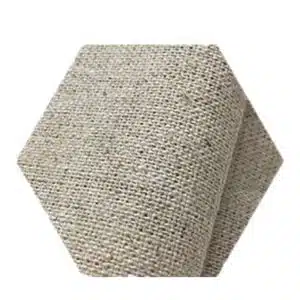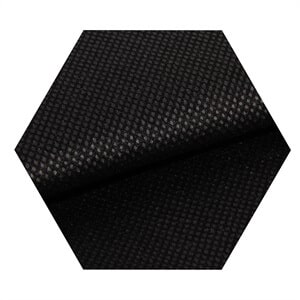Here are some brief fabric introductions to familiarize you with the materials used for Custom jewelry pouches and reusable bags.
Microfiber Fabric
The microfiber fabric boasts a nice leather-like texture, exuding a delightful vintage charm. Its distinctive hardness and thickness lend a wonderful tactile quality, allowing effortless shaping and maintaining of its form, all the while retaining the inherent softness that enables easy bending and curling.
Microfiber fabrics prove to be effortlessly easy to clean and exhibit robust corrosion resistance. Moreover, their remarkable uniformity facilitates seamless cutting and sewing. These fabrics are impressively wear-resistant, waterproof, and have exceptional anti-fouling properties. Notably, they are also non-toxic, environmentally friendly, and entirely odourless, offering effective mildew and moisture-proof capabilities.
PU Leather
PU leather, crafted from polyurethane, boasts performance comparable to natural leather. It offers a soft, leather-like texture that’s not only remarkably robust and durable but also comes at a budget-friendly price. Moreover, it showcases an excellent waterproof effect, making it highly practical for protective uses. Its smooth surface is resistant to dust and stains, ensuring easy maintenance and cleaning.
Velvet Fabric
Velvet fabric combines the elegance of slender wool with the excellence of high-quality cotton, resulting in a luxurious temperament and a delightfully rich texture. The softness and comfort of velvet make it a pleasure to touch, with its delicate texture akin to caressing a soft pile in your hand. Furthermore, the fabric is remarkably durable and wear-resistant, adding to its appeal and longevity.
Flannel Fabric
Flannel is crafted from wool fibres, boasting a plain, clean, and generously coloured appearance, while offering a soft and smooth touch. Being a new environmentally-friendly product, flannel ensures a trial-free experience, with no issues of hair loss or fading during use.
Satin Fabric
The Satin fabric boasts vibrant and rich colours, exuding a beautiful appearance. It possesses a delightful gloss and a soft, silk-like texture, achieved through the use of special yarn that provides exceptional softness and tear resistance. Moreover, this fabric exhibits no shrinkage after washing, and its environmental dyeing process ensures both colourfastness and anti-static properties.
Cotton Fabric
The cotton fabric consists of a single, relatively fine cotton yarn, whereas canvas is made by intertwining two or more strands of yarn, resulting in a cotton fabric having a more delicate appearance compared to canvas fabric.
Canvas Fabric
Canvas, an eco-friendly fabric made from cotton, boasts excellent durability due to its thicker weave. It primarily utilizes a plain weave, with a touch of twill weave occasionally incorporated. The result is a fabric with fine, smooth lines that offer superb printing and imaging effects.
Linen Fabric
Linen, crafted from the fibers of the flax plant, stands as an eco-friendly fabric. It typically possesses a softer, smoother, and shinier texture compared to canvas. Linen fabric naturally offers breathability, providing a refreshing feel. Its appearance is characterized by a natural and simple charm.
Jute Fabric
Jute fabric is derived from the hibiscus or Abutilon plants, bearing a resemblance to linen but often having a coarser texture. Jute feels rougher to the touch and is known for its toughness and excellent wear resistance.
Non-woven Fabric
Non-woven fabric belongs to the category of nonwoven textiles, offering soft, breathable, and flat fiber-based products. One of its key advantages is that it doesn’t generate fiber chips, making it robust, long-lasting, and cost-effective. The raw material used for non-woven fabric is polypropylene, which decomposes rapidly and qualifies as an environmentally friendly material.
